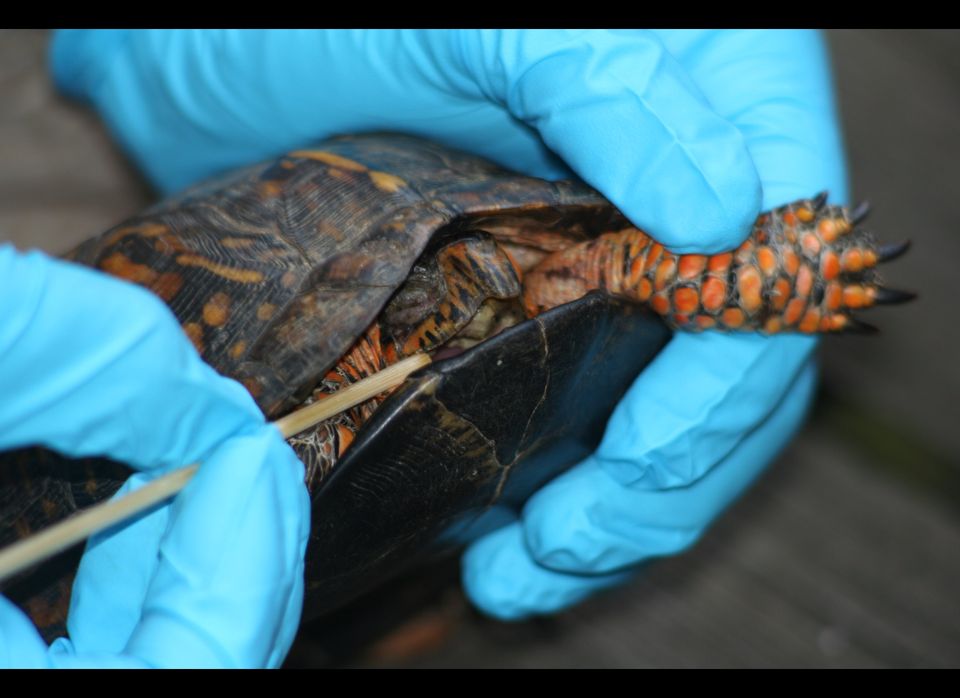
WASHINGTON -- What can you do to help stop a ravaging virus from spreading farther in Maryland's turtle population?
As the Washington Post reported earlier this week, the animal disease ranavirus has been blamed for the gruesome deaths of some 26 box turtles from 2008 to 2011 as well as the deaths of nearly all of the salamanders and tadpoles since spring 2010 in Montgomery County's North Branch Stream Valley Park.
In an interview with The Huffington Post, Dr. Richard Seigel, a biology professor at Towson University in Maryland and one of the researchers studying the turtles and amphibians killed by ranavirus, said that there are two things people can do to help stop the spread of the devastating virus.
For one, stay out of wetlands. "We don't want people wading into a wetland and then wearing those boots to wade into another wetland," Seigel said. The professor's team of students used boots that were never taken outside the park, as a way to help prevent the spread of the disease.
Even more importantly, Seigel said, don't release turtles into the wild, and don't move wild turtles from one location to another. If you find a turtle in the middle of the road, about to be hit by a car, move it to the side of the road but do not move it to an entirely new location.
"If that turtle has picked up a disease, it will spread that disease to other animals," Seigel said. "This is one of the things that we really worry about."
And if you have a turtle you can't care for anymore, contact a group that handles turtle adoptions (like the Mid-Atlantic Turtle & Tortoise Society).
The deaths in Montgomery County raise a lot of yet-unanswered questions that stop researchers from knowing how bad the situation caused by ranavirus will get, or what, if anything, can be done to help preserve the area's turtles and amphibians.
For one, it's still unclear whether Maryland's turtles and amphibians have spread the disease to one another, or if they are both picking up the virus from another source. It's not even clear if the turtles and amphibians have the same strain of the virus.
It's also uncertain how the disease is spread from animals living in one area to the animals living elsewhere. One possibility, and the reason people should not venture into wetlands with boots worn in other locations, is that the virus travels on clothing or fur -- predators, like raccoons, moving from one pond to another may bring ranavirus with them.
This is not the first time ranavirus has been found in two species in the same location. But the magnitude of the number of animals in Montgomery County that have died is unprecedented. And researchers do not yet know if the ranavirus deaths they've already found are just the "tip of the iceberg," Seigel said, portending an eventual collapse in the animal populations, or if the virus will simply peter out.
The funding to study Montgomery County's turtles dried up in December. But Seigel said he and his graduate students will continue studying the area's tadpoles and salamanders on their own. He said they're hoping to find that these animals are not on a "long, slow glide-path toward extinction."
RELATED VIDEO: A 2011 talk by Dr. Matt Gray on whether ranavirus can contribute to the decline of a species.

